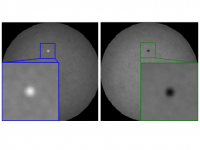We study experimentally how light interacts with complex photonic systems, such as scattering media, disordered multimode fibers, aperiodic photonic crystals and more. Such systems are composed of a large number of spatial, spectral, and polarization degrees of freedom, which are strongly coupled due to disorder. Our curiosity driven research focuses on understanding the fascinating physical phenomena that emerge in these systems, which exhibit both the quantum (particle-like) and classical (wave-like) nature of light.
Complex coherent phenomena in multimode fibers
 Multimode fibers are an interesting complex media. On one hand, they support many spatial degrees of freedom that are randomly coupled due to imperfections of the fiber. On the other hand, multimode fibers have nearly perfect transmission, the propagating modes are confined in the real and momentum space, and all the spatial degrees of freedom of the fiber can be easily controlled. We take advantage of these unique properties of fibers to coherently control phenomena like coherent backscattering (also known as weak localization) and principal modes.
Multimode fibers are an interesting complex media. On one hand, they support many spatial degrees of freedom that are randomly coupled due to imperfections of the fiber. On the other hand, multimode fibers have nearly perfect transmission, the propagating modes are confined in the real and momentum space, and all the spatial degrees of freedom of the fiber can be easily controlled. We take advantage of these unique properties of fibers to coherently control phenomena like coherent backscattering (also known as weak localization) and principal modes.
Multi-path interference of entangled photons
 Light in complex media propagates through multiple different paths. For classical light (waves), the inference between all the paths the light can propagate through results in a random grainy pattern called speckle. We study how multi-path interference affects quantum states of light, such as entangled photons. Specifically, we are interested in generating states of light with quantum signatures that are immune to disorder and scattering.
Light in complex media propagates through multiple different paths. For classical light (waves), the inference between all the paths the light can propagate through results in a random grainy pattern called speckle. We study how multi-path interference affects quantum states of light, such as entangled photons. Specifically, we are interested in generating states of light with quantum signatures that are immune to disorder and scattering.
Optical key distribution with classical and quantum light
 The chaotic dynamics and extreme sensitivity to external perturbations make complex media particularly well-suited for optical cryptography. We are developing key distribution methods for optical encryption that rely on propagation of light through complex random media.
The chaotic dynamics and extreme sensitivity to external perturbations make complex media particularly well-suited for optical cryptography. We are developing key distribution methods for optical encryption that rely on propagation of light through complex random media.
